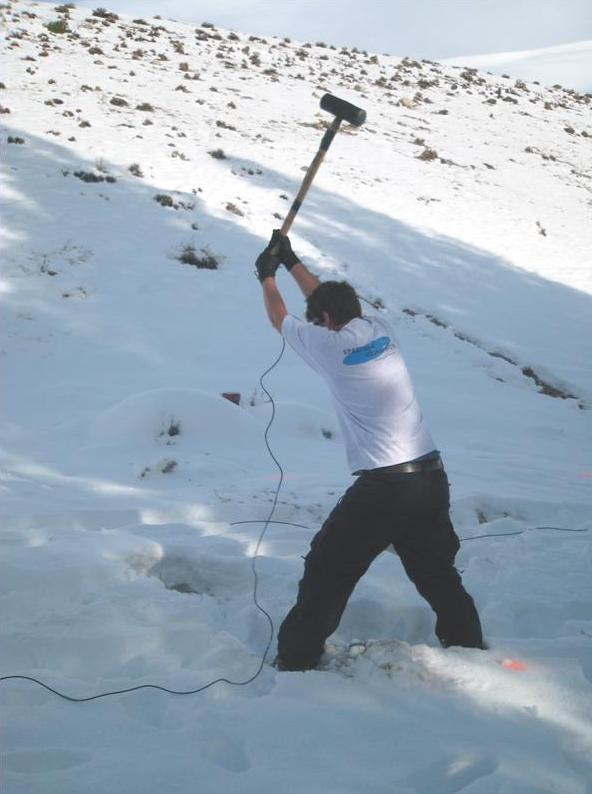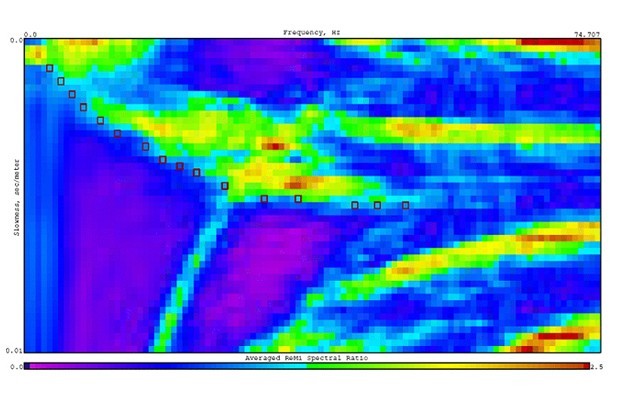The ReMi method is a seismic surface wave method (similar to SASW and MASW methods) that uses ambient noise and surface waves to generate a detailed vertical shear wave velocity (Sv) profile to depths of up to 100 meters. Prior to 1999, seismic shear wave profiles were obtained using shear wave refraction, seismic cone penetrometer, or downhole/crosshole techniques. Downhole and crosshole techniques tend to be more reliable but can be costly. The ReMi technique provides a non-invasive way of obtaining a vertical profile of the shear wave and, unlike borehole methods, this technique provides a shear wave sample of a greater volume of material, thereby allowing a more representative shear wave velocity column that is averaged over the length of the seismic array.
The ReMi method is capable of detecting thin layers and velocity inversions, and as such is highly reliable and commonly used to measure Vs30 for earthquake design ground motion determinations. ReMi can also be used at any site to measure the lateral variation of shear wave velocity in near surface materials. Because it thrives in noisy environments the ReMi method is ideal for shear wave profiling in urban environments where seismic refraction is precluded because of large amounts of ambient noise. Additionally, the ReMi method is also very useful for stratigraphic delineation in complex geologic environments where even shear wave refraction fails.
The hallmarks of the ReMi technique are 1) that it uses a linear array that does not require CMP-style shooting and 2) that it relies primarily on ambient noise to generate the Rayleigh waves.



